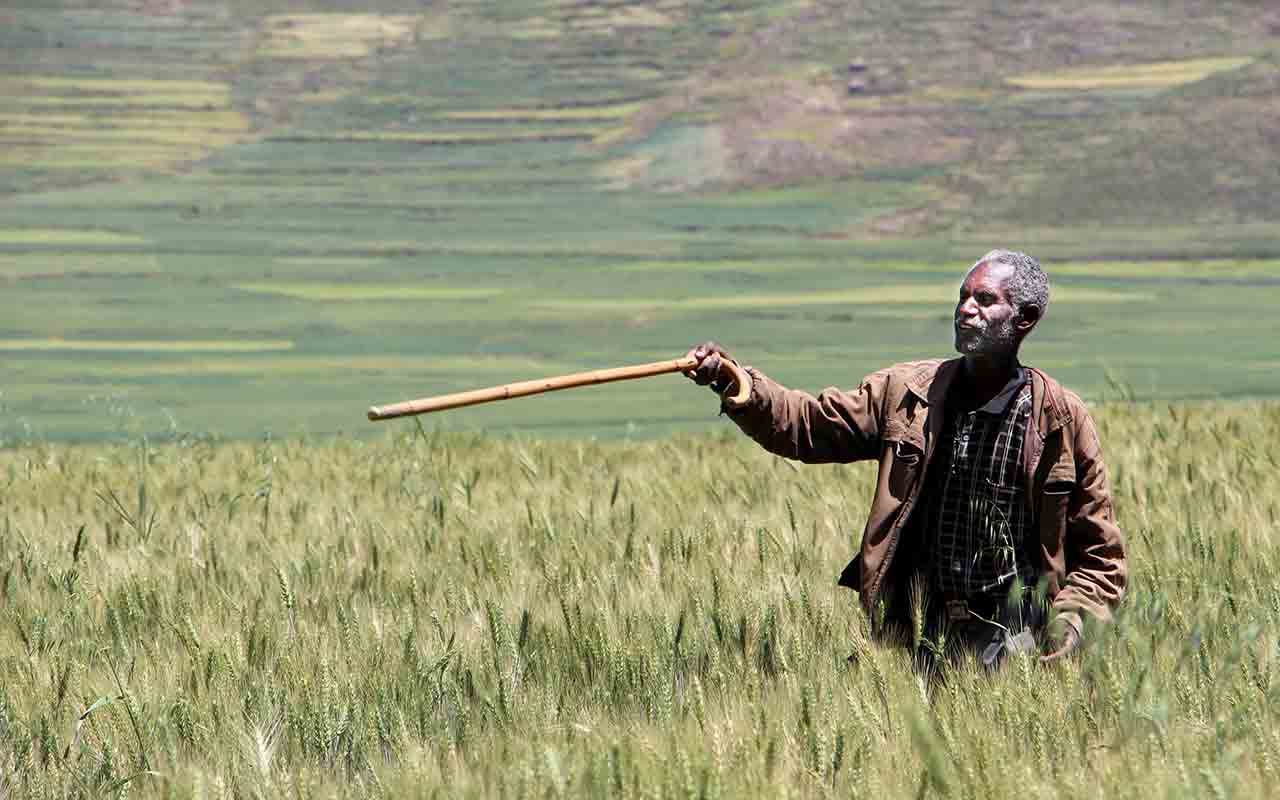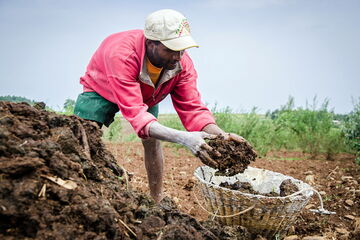Newsletter
Don't miss a thing!
We regularly provide you with the most important news, articles, topics, projects and ideas for One World – No Hunger.
Newsletter
Don't miss a thing!
We regularly provide you with the most important news, articles, topics, projects and ideas for One World – No Hunger.
Please also refer to our data protection declaration.
Every year, ten million hectares of soil are destroyed worldwide. A GIZ project in the Ethiopian highlands demonstrates how the testing of a new model can be transformed into national policy for maintaining soil fertility.

GIZ
Support the partner countries to effectively implement proven methods to protect the soil and rehabilitate degraded soil on a broad scale.
Improve political conditions and provide incentives for sustainable land use.
Systematically provide, make available and exchange learning experiences from the partner countries.
175.3 million euros in all seven partner countries
In the Ethiopian highlands, intensive farming has been practiced for decades, without returning nutrients to the soil. The government has launched programs to counteract soil erosion in the highlands and improve soil fertility. But the government's strategies are based entirely on mineral fertilizers, a method that often falls short of the mark because organic matter and nutrients are extracted from the soil with each harvest. As a result, the soil is exhausted and acidified. Proven technologies for maintaining and improving soil fertility already exist. But small farmers often lack the knowledge and access to the necessary materials to apply such cultivation methods on their farms.
The global project "Soil protection and soil rehabilitation for food security" promotes sustainable land use in five partner countries (Ethiopia, Benin, Burkina Faso, India, Kenya, Madagascar and Tunisia). The target group is small farmers. They learn, for example, how to ensure the lasting fertility of their soil through the use of lime, a balanced use of organic and mineral fertilizer, better seed and proper methods of tilling the soil. This combination of methods is known as "integrated soil fertility management" and is being implemented in many partner countries, including the Ethiopian highlands.

Today, manure and lime are used as well, rather than just mineral fertilizer. "I am very proud that I was the first to try these methods!", says Haile Abadid as he makes his way to his field in Ethiopia. He is one of nine farmers who agreed to be one of the project's model builders four years ago. Under the guidance of advisors from the regional agricultural authority, he divided his field into equal parts. One part was tilled in the traditional manner, while the other was cultivated in line with integrated soil fertility management, with new seeds and new methods: row sowing, increased use of organic fertilizer and a mineral-enriched fertilizer. The latter is used as needed on the basis of soil analyses. This saves money and conserves soil and groundwater. Now Mr. Abadid stands between two the two parts of the field, and points with his cane to the area on his right, where he used the new methods. "The difference is impressive. The wheat here is growing much higher!" At the end of the season, he will present his results to the other farmers: "They're already asking about it." According to the motto "only what I have seen with my own eyes, I believe" interest is aroused and knowledge is imparted. In Mr. Abadid’s field, they can already observe which methods produced a higher yield. Higher wheat stalks with strong leaves also mean more biomass - and thus more organic material that can be introduced into the depleted soil.
"The difference is impressive. The wheat here is growing much higher!"
Since 2015, the project has created around 2,500 demonstration fields annually on hundreds of hectares in the highlands of Ethiopia using the method of integrated soil fertility management. More than 34,000 farmers and 6,000 employees of government partner organizations (24 percent of whom are women) have taken part in training courses. The results show that the grain yield of wheat, tef and corn in the fields cultivated in this way was 50 percent higher than in the control fields; with additional application of lime on acidic soils it was even 70 percent higher. Integrated soil fertility management is now applied to over 55,500 hectares. A further 48,500 hectares of communal land has been placed under protection against overgrazing and erosion.
The project also influences national policy: Together with partners from the Ethiopian Ministry of Agriculture and researchers, experiences are being analyzed and recommendations formulated for optimized fertilization. The findings will be incorporated into national planning and thus also into national policy and will be implemented in other districts. In the course of institutionalizing this approach and anchoring it in the national system, the global project supports the regional agricultural offices in the nationwide introduction of integrated soil fertility management and participatory advisory approach. A further consequence of the advisory services: in 2019, the Ethiopian Ministry of Agriculture decided to establish a commercial lime supply chain and initiated a national campaign for the rehabilitation of acid soils.